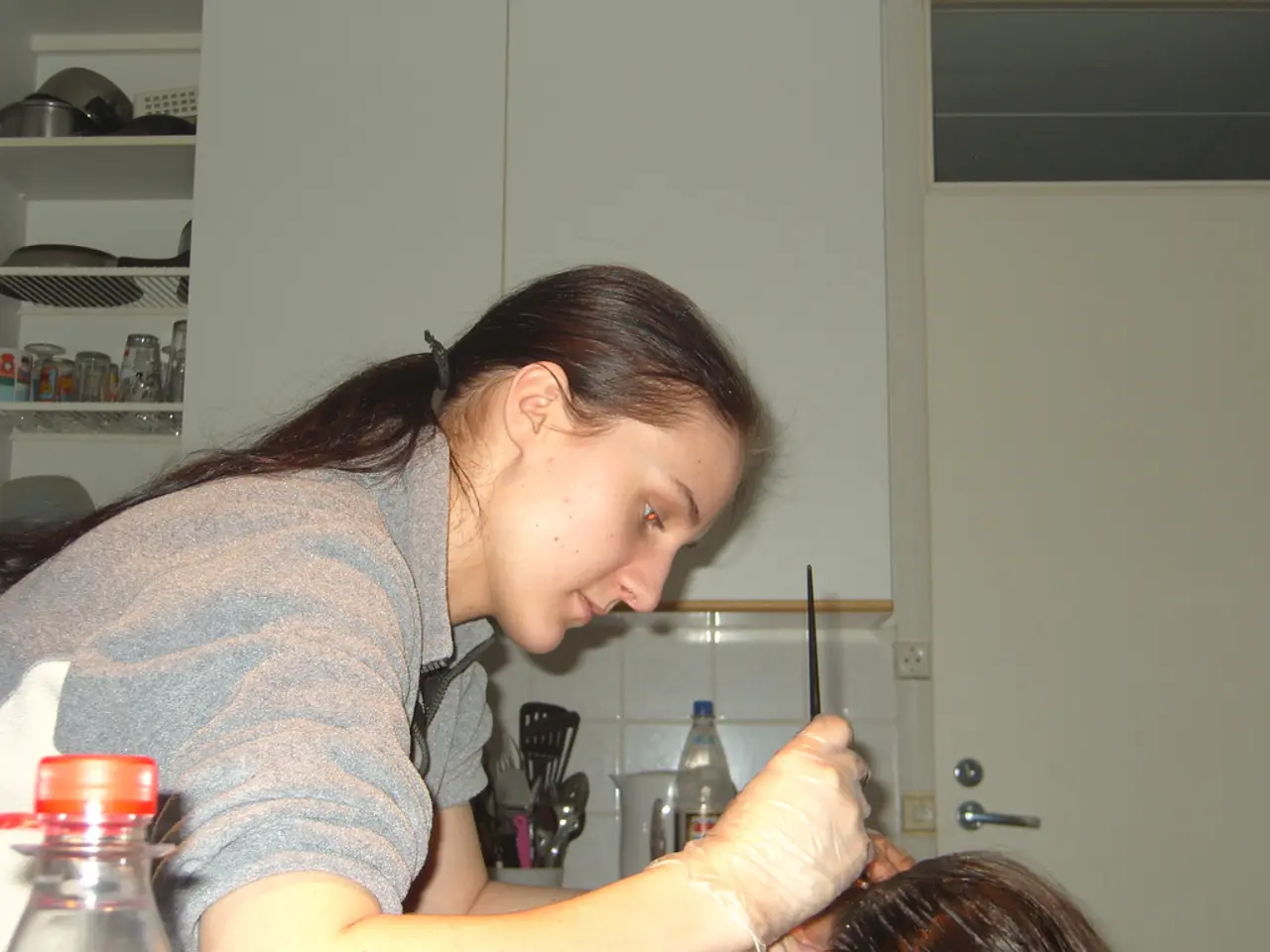Addressing Ingrown Hair Scars: Dermatologist Recommendations
Ingrown hairs, a common occurrence after shaving, waxing, or tweezing, can lead to scars on the skin. Here's a guide on how to manage and prevent ingrown hair scars.
Ingrown hairs happen when hairs curve and grow back into the skin, causing irritation and potential scarring. To avoid this, it's recommended to shave with the grain, use a clean, sharp razor, and maintain good shaving hygiene.
Chemical peels can help remove the top layers of skin and some scar tissue, providing a deeper exfoliation and longer-term results with consistent treatments. Another option for exfoliation is using alpha hydroxy acids (AHAs) like lactic acid and glycolic acid, which can help chemically exfoliate the skin and fade scarring. Gently exfoliating the area may also help get rid of the dead skin cells blocking the pores and help fade scarring.
Retinoids, derived from vitamin A, encourage skin cell turnover and can help fade scars, including those from ingrown hairs. Over-the-counter retinoids are available, but a dermatologist can provide recommendations and prescription options.
Topical creams with azelaic acid, hydroquinone, or kojic acid can help with hyperpigmentation from ingrown hairs. Vitamin C, another popular ingredient in skin care, has a lot of uses and can help brighten skin, which may help fade scarring and hyperpigmentation caused by ingrown hairs.
Silicone gel helps keep the skin moisturized, which is crucial for scar management. Onion extract gel, found in over-the-counter scar treatments, is an ingredient that may help, although more research is needed to confirm its effectiveness.
For fading ingrown hair scars or pigment changes, options include using a warm compress, exfoliating the area, applying silicone gel sheets, and using retinoid creams. It's important to note that picking or tweezing an ingrown hair increases the risk of infection and scarring.
Laser hair removal can reduce hair growth, the sight of scars and hyperpigmentation, and stimulate collagen production, potentially helping with skin hydration and elasticity. This professional treatment can be beneficial for those dealing with ingrown hairs, especially in the beard area, where they are more common.
It's worth mentioning that scarring from ingrown hairs is not super common; it's more likely the discoloration you have after picking at an ingrown hair is post-inflammatory hyperpigmentation. Folks with darker skin tones are more likely to deal with ingrown hairs due to thicker, sometimes curly hairs.
In conclusion, managing ingrown hair scars involves a combination of exfoliation, retinoid use, moisturization, and, in some cases, professional treatments like laser hair removal and chemical peels. By following these tips, you can help reduce the appearance of scars and prevent recurrence.





